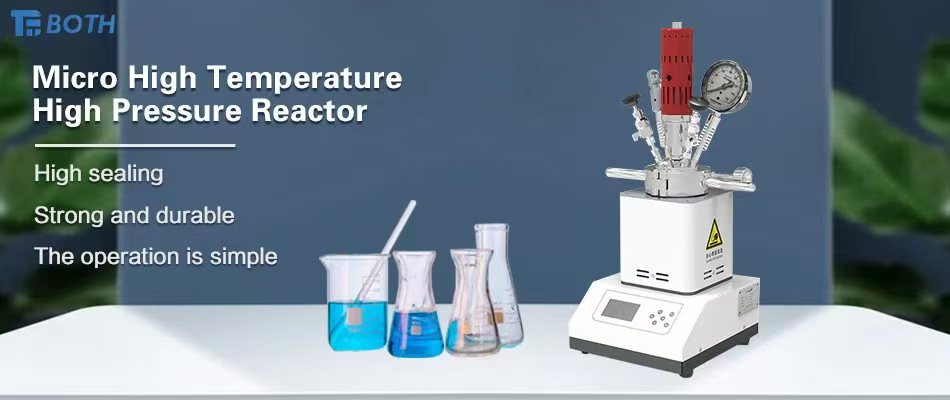The mechanical stirring high temperature high pressure reactor is a key piece of equipment widely used in the chemical industry and laboratories. It is designed to carry out chemical reactions under high-temperature and high-pressure conditions, facilitating the transformation or synthesis of substances. This reactor not only provides high reaction efficiency and yield but also meets the demands of specific reaction conditions.

The primary feature of the high-temperature high-pressure reactor is its ability to operate safely under high-pressure and high-temperature conditions. It typically consists of a pressure-resistant and high-temperature-resistant steel vessel, sealing devices, heating and cooling systems, and a control system. The reactor is equipped with a heating system to create the required high-temperature environment, while the sealing system effectively prevents the leakage of reactants. The control system allows operators to regulate parameters such as reaction temperature and pressure, enabling precise control and monitoring.
Mechanical stirring high-temperature high-pressure reactors are widely applied in several important chemical reactions and related fields. In the chemical industry, they are often used in organic synthesis, catalyst research and development, polymer material synthesis, and other critical processes. Under high-temperature and high-pressure conditions, the reaction rate is significantly increased, reaction time is reduced, and both reaction yield and selectivity are notably improved. Furthermore, high-temperature high-pressure reactors are also commonly used in chemical refining, new material development, petrochemical industries, and energy storage, providing essential technical support for the advancement of these industries.
The use of high-temperature high-pressure reactors not only improves reaction efficiency but also helps explore new chemical reaction pathways and products. Under high-temperature and high-pressure conditions, the chemical activity of substances increases, leading to more frequent and intense molecular collisions and reactions, which is beneficial for complex processes. By introducing these extreme conditions into reactions, goals that cannot be achieved under traditional conditions can be realized, leading to the synthesis of novel compounds or materials.
Operating and managing high-temperature high-pressure reactors also requires strict safety measures. Operators must undergo professional training, familiarize themselves with the structure and working principles of the reactor, and be aware of potential safety hazards under high-temperature and high-pressure conditions. Necessary protective measures should be implemented, such as wearing appropriate protective gear and preventing emergencies in extreme conditions. Additionally, the operation and maintenance of the reactor must comply with relevant operating procedures and standards to ensure the safe and reliable operation of the equipment.
As an important piece of chemical equipment, the mechanical stirring high-temperature high-pressure reactor plays a significant role in both the chemical industry and laboratory settings. It not only enables chemical reactions under high-temperature and high-pressure conditions, enhancing reaction efficiency and yield, but also provides researchers with opportunities to explore new reaction pathways and products. In its application, it is essential to prioritize safety, ensure proper operation and management, and maximize the advantages of high-temperature high-pressure reactors, driving innovation and development in the chemical industry.
Contact our engineering team for tailored solutions to enhance your lab’s research capabilities.
Post time: May-14-2025






